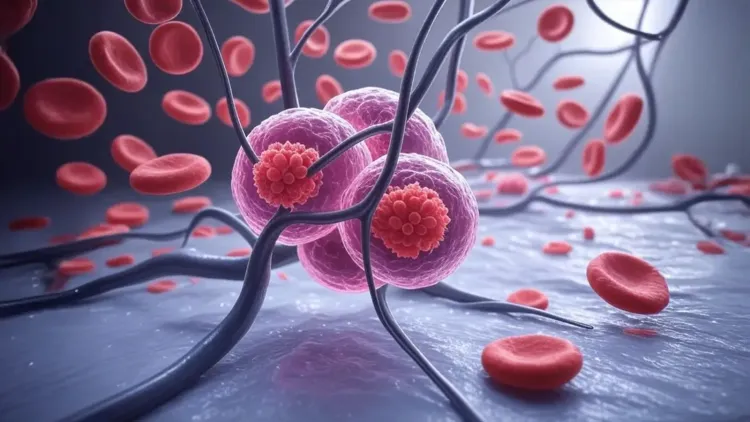Could ‘Mirror, Mirror in the Lab’ Help Spot Diseases Early?

Synopsis
Key Takeaways
- Innovative nanopores can detect various biomolecules.
- They enable early diagnosis of diseases like cancer.
- Potential for targeted cancer therapies.
- Collaboration across institutions enhances research quality.
- Significant implications for future healthcare solutions.
Thiruvananthapuram, Oct 3 (NationPress) Imagine a microscopic tunnel capable of indicating the early stages of cancer—scientists at BRIC-RGCB, located in Thiruvananthapuram, are making this vision a reality.
In a remarkable study, researchers have engineered mirror-image nanopores, which are minuscule protein-like channels intended to mimic the natural molecules.
Under the leadership of Dr. K.R. Mahendran, the team developed these synthetic structures, termed DpPorA, from unique peptides that are inverted forms of natural proteins.
Computer simulations validated that the mirror-image pores are structurally contrary to their natural equivalents—and intriguingly, this “mirror trick” enhances their stability and selectivity.
Their research was recently published in Nature Communications.
“These nanopores function like highly selective gates,” Dr. Mahendran stated.
“We can adjust them to allow specific molecules to pass while blocking others. This enables us to detect anything from minute sugar rings to full-sized proteins, paving the way for early disease detection and even personalized diagnostics.”
However, the innovation extends beyond detection. Laboratory tests demonstrated that these mirror molecules can specifically target and destroy cancer cells, leaving healthy cells intact—suggesting future therapies that may combat cancer safely.
Prof. Chandrabhas Narayana, Director of RGCB, praised the discovery as a game changer.
“This has vast potential—not just in cancer, but also in wound healing, muscle repair, and enhancing immune function. It might even assist in addressing neurodegenerative diseases like Alzheimer’s and Parkinson’s,” he remarked.
This endeavor was a collaborative project involving CSIR-NIIST, Thiruvananthapuram, Constructor University, Germany, and the Centre for Human Genetics, Bengaluru.
Funding was secured from prominent Indian scientific organizations, including the Department of Biotechnology, the Department of Science and Technology, ICMR, and CSIR.
By merging chemistry, nanotechnology, and cancer biology, this research has unveiled a powerful new instrument that could transform medical diagnostics.
These tiny mirror-image pores may eventually facilitate the early, safe, and precise detection of diseases, fundamentally altering how physicians diagnose and treat ailments.









